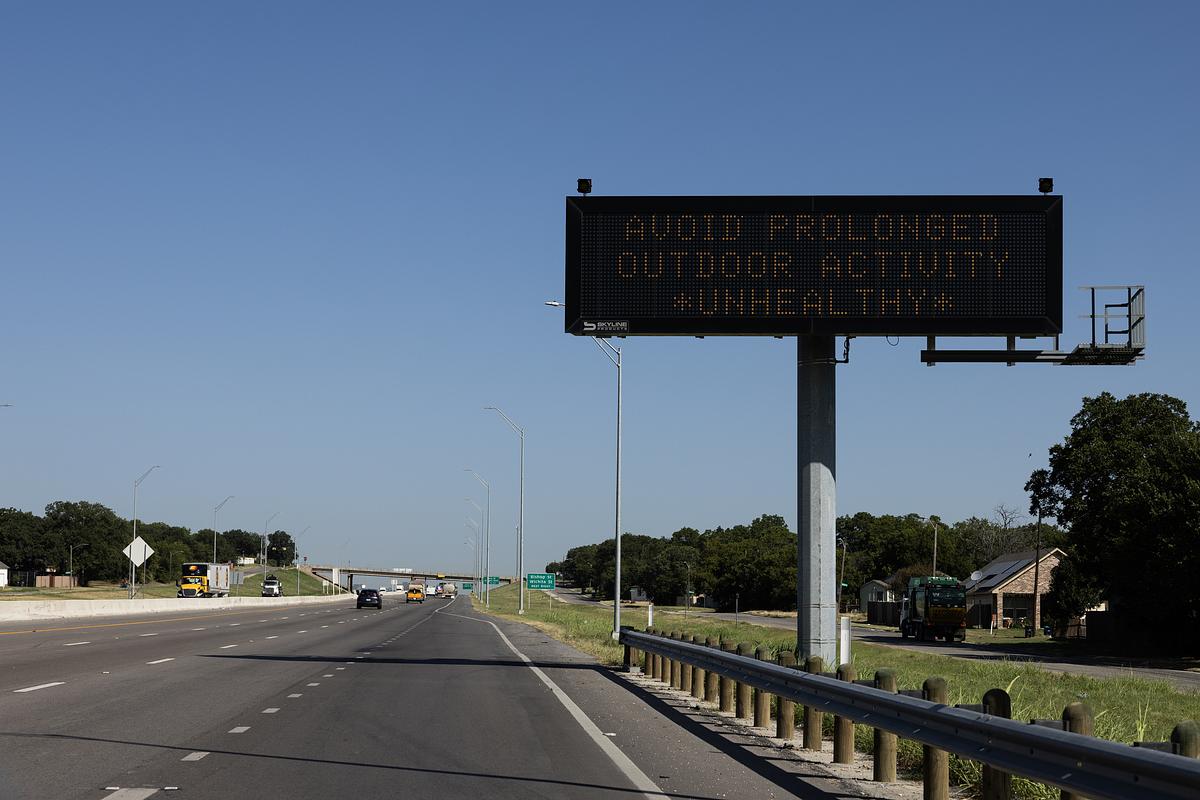North Texas saw 14 days of unhealthy air pollution in September, the most the region has seen in one month so far this year, according to the latest regional data.
The Texas Commission on Environmental Quality issued ozone action day alerts on most of those days. Such alerts warn residents, businesses and industries when weather conditions are likely to create high levels of ozone, urging them to mitigate emissions, such as those generated by cars and power plants.
August had 10 days of high smog levels, according to the data.
When smog exceeds the federal standard of 70 parts per billion, the alerts encourage the public to adjust daily routines to minimize health risks and exposure to poor air conditions, according to the North Central Texas Council of Governments, the agency responsible for monitoring the region’s air quality.
Last year, only three alerts were issued in Dallas-Fort Worth for that September, according to data from the state environmental commission. A total of 43 alerts were issued in 2024.
While ozone levels fluctuated throughout the past decade, smog in North Texas gradually increased within the past three years.
From 2015 to 2024, the region had the most ozone action day alerts in 2022 at 61, with 16 issued in September.
Ozone comes from several sources. However, vehicles, construction equipment, locomotives and aircraft account for about 60% of emissions.
North Texas’ booming growth contributes to ozone formation, council of governments air quality planner Daniela Tower previously told the Report.
Ozone action days occur during hot temperatures, sunny weather, light winds and a lack of atmospheric movement. When combined with pollutants, these conditions can form unhealthy air quality, Tower has said.
Smog measured between 71 and 85 parts per billion is considered unhealthy for young children, older adults, people with lung disease and those who are active outdoors.
What is ozone?
Ground-level ozone, or smog, forms when volatile organic compounds and nitrogen oxides emitted by human activities and natural sources react in the sunlight, according to the council of governments. Vehicle emissions, power plants, industrial sites and area sources such as paints and motorized lawn equipment largely contribute to ground-level ozone.
Exposure to smog can cause various health effects such as coughing, difficulty breathing, inflamed and damaged airways, and infection, according to the Environmental Protection Agency.
Such pollution can worsen existing respiratory conditions, such as asthma, lung disease and bronchitis.
North Texas could see more ozone action days as smog typically spikes between March through November, according to the state environmental commission.
Per the EPA’s Clean Air Act, Fort Worth polluters or major sources of volatile organic compounds could face annual fines of $45 million if ozone levels are not brought to or below 75 parts per billion.
Dallas-Fort Worth’s design value of ozone sits at 83 parts per billion so far this year. That value is the average of the fourth-worst ozone day from each year in a three-year period, according to the council of governments.
Whether polluters will see those fines is unclear as the Trump administration has repeatedly promised to repeal or roll back federal environmental regulations, including those on climate change and air quality.
Officials with the council of governments are drafting the Dallas-Fort Worth Air Quality Improvement Plan, which outlines strategies to improve the region’s air quality through 2050.
As part of a federal grant application, officials have until Dec. 1 to finalize and submit the plan to the EPA.
The public can review and comment on the plan at the North Central Texas Council of Governments’ website. Public comment closes Nov. 11.
Nicole Lopez is the environment reporter for the Fort Worth Report. Contact her at nicole.lopez@fortworthreport.org.
At the Fort Worth Report, news decisions are made independently of our board members and financial supporters. Read more about our editorial independence policy here.
Related
Fort Worth Report is certified by the Journalism Trust Initiative for adhering to standards for ethical journalism.
Republish This Story
Republishing is free for noncommercial entities. Commercial entities are prohibited without a licensing agreement. Contact us for details.
